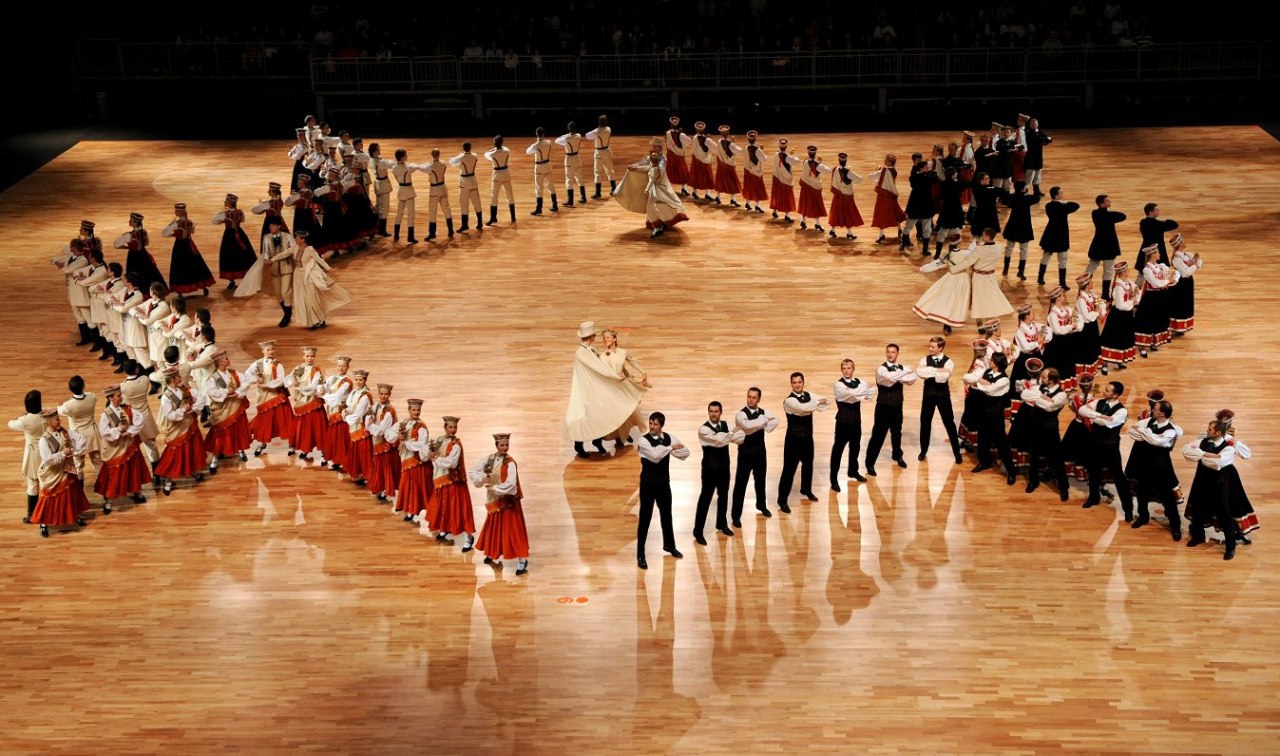The Gatves deja depicts a wedding, with many couples creating a composition of an alley through which the bride and groom are dancing. It features many half-steps and a step-close, and a sidestep that's hopefully missing from the lives of the actual newlyweds.
Feeling that something is missing from her new dance, Tangijeva-Birzniece went to a museum. Upon seeing an ancient Latvian folk instrument, she asked: "What's this thingamajig?" Thus the Gatves deja became the first but not the last Latvian dance to feature a trīdeksnis. In the 1980s Ieva Akurātere of the legendary Pērkons band likewise combined the use of this thingamajig, or trīdeksnis, with elements from the dance.
Among the many (if humble) Latvian records, such as the one for the greatest bowl of rasols or the one for making the highest fountain of cola and mentos, there's also the one for the longest contra line in the world. In 2008, a total of 2208 participants danced the Gatves deja, beating, for what it's worth, the previous record holders with twice the size.
Meanwhile in 2019, for the 30th anniversary of the Baltic Way, people danced it on the runway of Rīga Airport.
Gatves deja is said to symbolize a life lived upright and beautiful, and with cheer.





























